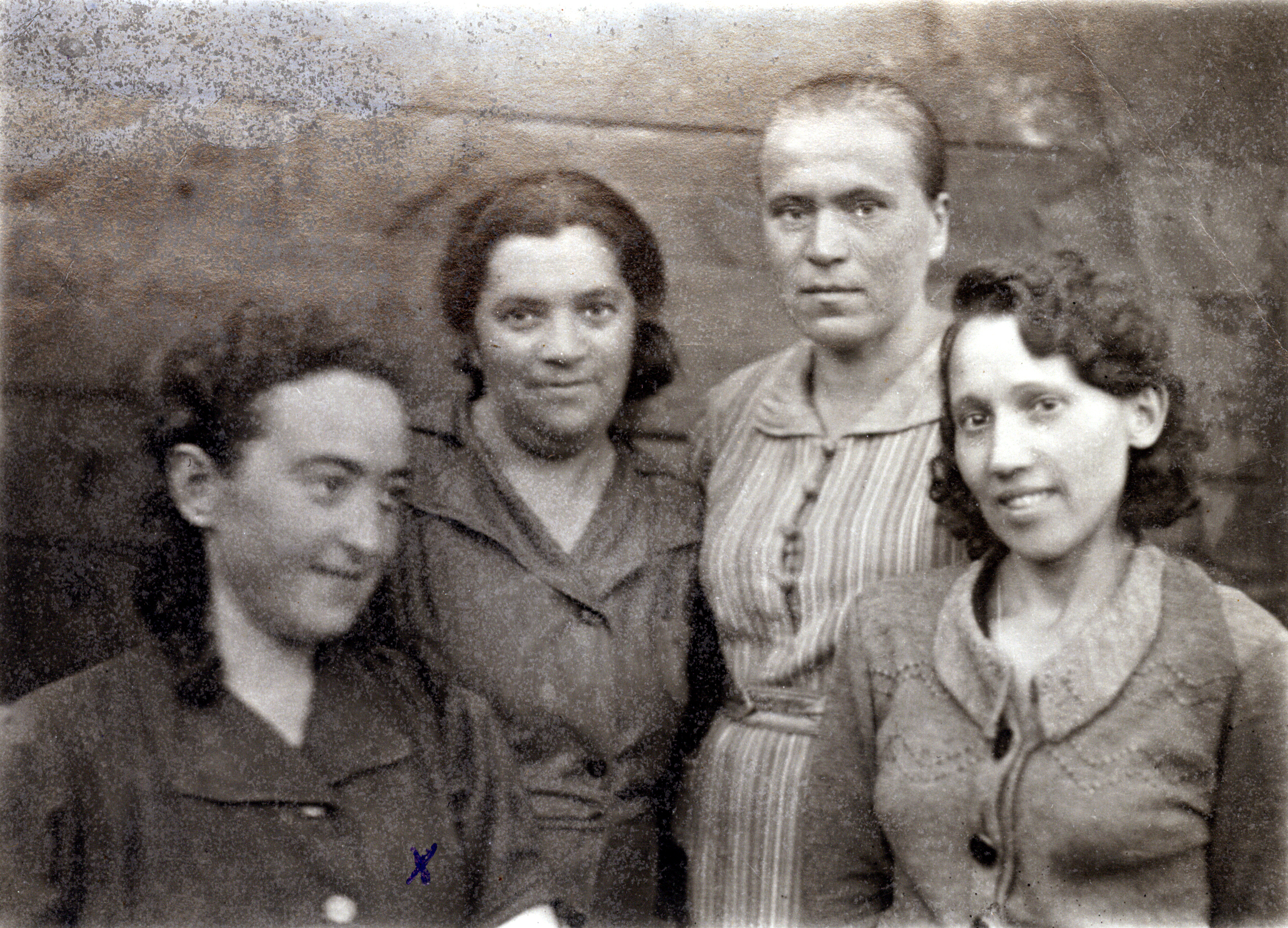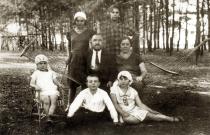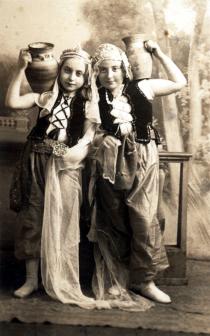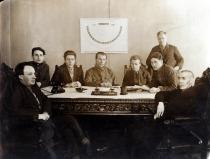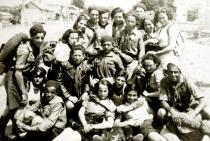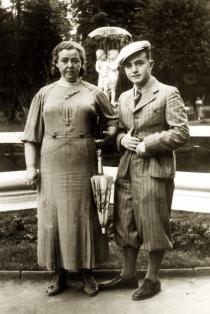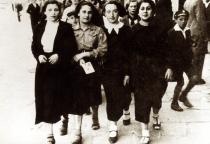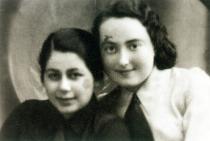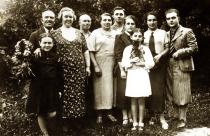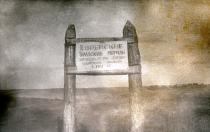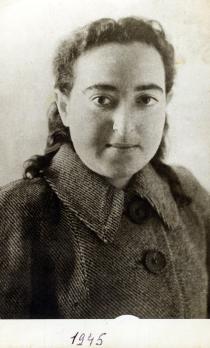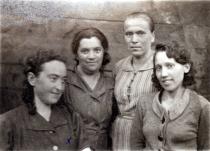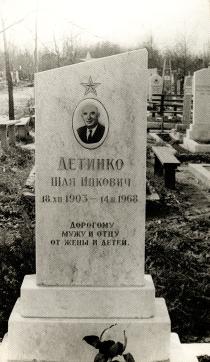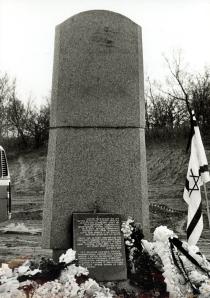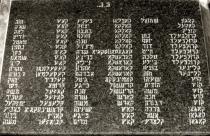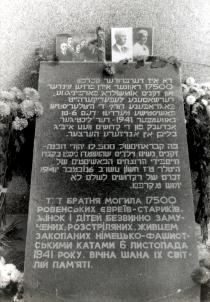This is a picture from the labor camp’s sewing workshop, where we worked. I do not know who took this snapshot but I kept it, and it's dated 1945.
I am the first from the left. Second from the left is the Jewish girl Haya and third is a Russian woman. Fourth is Dina. She was arrested in Harbin, a Chinese town.
When we were in the camp a lot of prisoners came from Harbin. We were all good dressmakers. Haya is second from me, you can see a needle stuck in her collar.
She was a good seamstress. She had a daughter in an orphanage, who was also taken away when her parents were arrested. She was a very nice person.
I know that Haya was released before me. She was arrested in 1937, so she was discharged before me and lived for some time in the Urals, in the town of Tavda.
She got married a second time. Her husband was a very good man, and they took her daughter out from the orphanage. It was when I was there I met that small girl. But their destiny is unknown to me.
I had been to 11 different prison camps, and after 4 years of wanderings I was announced the verdict: 10 years of imprisonment and 5 more years in exile. I was standing there, not understanding, and whispering: "10 years, 10 years…".
A security girl gave me a photo: "Here, Kats, take it for memory!".And I keep the photo to this day. After the verdict I was sent to a camp called East Ural Lag, in the city of Tavda.
It was a mixed camp for men and women. In the beginning I was sent to general works, and in a couple of days, having understood that I could sew, they charged me with tailoring.
In that camp I met the Victory Day on May 9, 1945. The chief of camp collected all of us and announced Victory. But nothing had changed for us.
In 1946 brother Aron came to see me; he had survived. He searched for me everywhere, and he did find me after all and managed to get the permission to visit me. I knew beforehand that he would come.
I prepared a whole notebook. I wrote in Hebrew everything about my life under the title "Only I didn't die," and I handed him that notebook."
He asked: "What should I do, wait for you or leave for Poland?" At that time the Poles were being repatriated to Poland. I advised him to leave without thinking twice. He was already married and had a child.
From Poland they later moved to Germany, where he became the director of a Jewish grammar school, and he worked there until he had an opportunity to leave for Israel.
He went to Israel, and during the first years they lived in misery. But he continued his education in Israel and became a teacher of mathematics. He worked as a teacher until retirement. Now he lives in Holon, near Tel Aviv, and I correspond with him. His son Nahman lives in a kibbutz.
Having learnt about the death of my parents and my little sister Bella, I fell seriously ill. They died in a ghetto in Rovno. My brother survived by a miracle. Because of my nervous condition I started to suffer from nettle-rash, and spent more than a year in a hospital.
Then again I resumed my work in the workshop. I was treated well by everybody. The free workers advised me to master the profession to the degree where I could be able not only to sew, but also to cut.
In 1951, when 3 months remained before discharge, I was sent to a strict regime camp in Mordovia, because there was an order by Stalin to put all the "political" prisoners to strict regime camps.
After we reached Krasnoyarsk, we sailed on a barge up the Yenisei River to the settlement of Maklakovo [nowadays - the town of Lesosibirsk].
It was a big settlement with extensive forestry. There I established a workshop producing light dress and became known around the settlement. My life in the exile began. I organized the shop, and had no shortage of work or workers, or money.
I rented a room, bought a sewing machine, and started to live a normal life.
